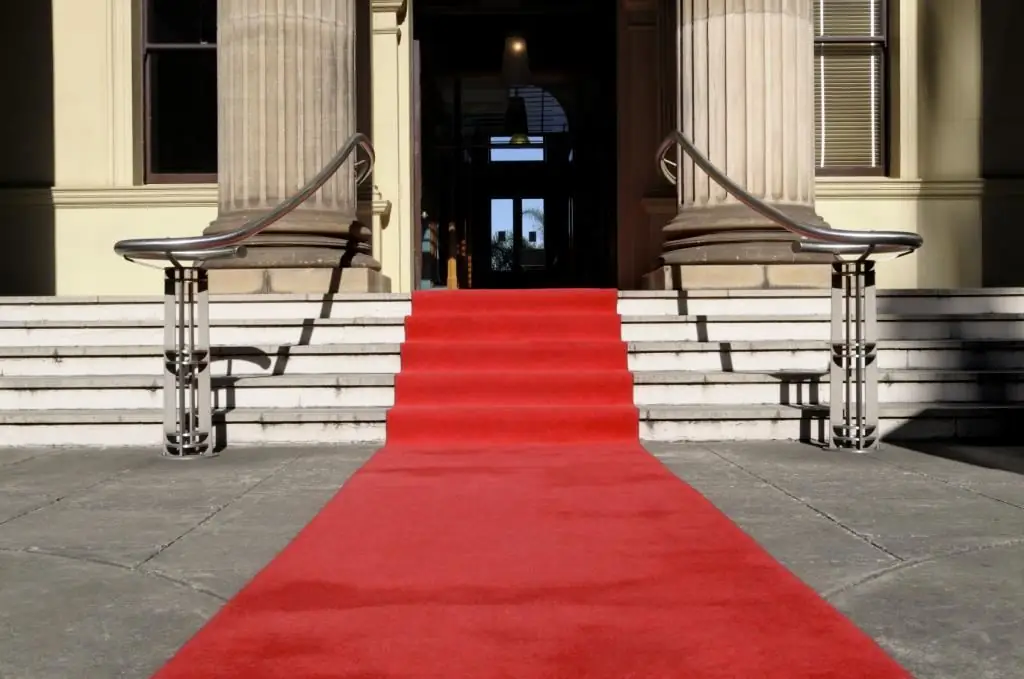- Author Henry Conors [email protected].
- Public 2024-02-12 02:54.
- Last modified 2025-01-23 09:07.
On February 21, 1613, the boyar Mikhail Romanov, who belonged to the family closest in blood to Rurik and Prince Vladimir, was elected by the Zemsky Sobor to the kingdom. Few people know that the election was preceded by long persuasion and "bashing" of the boyars, since 16-year-old Mikhail Romanov, who was at that time in the Ipatiev Monastery with his mother Martha, categorically refused to take on an overwhelming burden and begged to be left alone. Three centuries will pass, and a commemorative medal "300 years of the reign of the Romanov dynasty" will be issued in Russia. And 5 years later, on July 18, 1918, Emperor Nicholas II, a descendant of Mikhail Romanov, will be shot in the Ipatiev house in Yekaterinburg… So the historical circle is closed.
All-Russian celebration
On February 21, 1913, the Russian Empire celebrated the 300th anniversary of the Romanov dynasty. The celebration was celebrated on a grand scale, and in honor of the memorable date, according to various estimates, from 2,028,166 to 5,000,000 copies of the medal "300 years of the Romanov dynasty" were made by order of the sovereign. The main order was about 1,500,000 items. Then the circulation was increased, and, taking into account the work of individual workshops, the count of the number of copies can only be approximate.

The idea of the project of a commemorative product belongs to the medalist Anton Fedorovich Vasyutinskiy, who created many breastplates both in the Russian Empire and in the USSR.
The idea and execution of the facial bas-relief - Mikhail Arkadyevich Kerzin, Russian and Soviet sculptor, who received the title of Honored Artist of the Byelorussian SSR. In 1979, at the age of 96, the master died in Leningrad.
Two sides of the coin
The product is made of light bronze. The shape of the medal is a circle with a diameter of 28 mm.
The main side is represented by two portraits: in the foreground is Tsar Nicholas II in the uniform of Colonel of His Majesty the Life Guards of the 4th Infantry Regiment; behind - the founder of the dynasty, the first of the Romanov tsars, Mikhail Fedorovich. He is wearing the famous Monomakh's cap. Sculptures of sovereigns on the chest medals.
The edges are outlined with a simple dot and dash border. The convex image on the main front side of the product resembles an imprint on commemorative silver coins of 1 ruble denomination.
The reverse side of the medal is a circle, bordered identically to the front side. Inside- a five-line text written horizontally: "IN MEMORY OF THE 300TH ANNIVERSARY OF THE REIGN OF THE HOUSE OF ROMANOVS 1613-1913".

In the center of the upper semicircle there is an eyelet, into which a ribbon of three colors was threaded, symbolizing the family coat of arms of the Romanov dynasty and at the same time the color of the old Russian banner: black turned into orange (sometimes yellow), and then - into white. Sometimes the tape was replaced by a block.
The material from which the varieties of the medal "300 years of the House of the Romanovs" were made could be either bronze of any shade and composition, or silver or gold (which was not common). This was explained by the fact that private craftsmen and firms also took orders for the manufacture of breastplates, and here everyone showed their own creative approach. Therefore, today it is very difficult to accurately guarantee the authenticity of existing copies. Hope only for intuition…
In addition, the details of the sculptural print have significant differences. There are medals of a smaller diameter, reaching up to 15 mm: they are designed for a tailcoat. All badges, regardless of size and other differences, were to be worn on the chest.
Collectors, in view of the abundance of such items, appreciate exclusively undamaged medals "300 years of the House of the Romanovs". Exclusive copies that differ from the generally accepted pattern are especially welcome.
Eligible to wear
The medal "300 years of the House of Romanov" was accompanied by a certificate of awarding the badge. She couldhand over to several categories of citizens of the Russian Empire:
- To junkers and representatives of the page corps.
- To all privates in the service on the day of February 21, 1913, namely: in the army or navy as part of a separate border guard corps; in a separate building of the gendarmerie or police department; as part of an escort or prison guard.
- To representatives of the peasant class who participated in events attended by the emperor.

Certain categories of persons listed below were allowed to purchase the medal "300 years of the Romanov dynasty", produced in private firms, with the right to receive the appropriate certificate.
- To all active civil servants of military, maritime, civil or court institutions and departments.
- Persons who were members of the State Council or the State Duma.
- To representatives of churches of all denominations.
- Elective representatives of zemstvos, noble and city governments.
- Employees of all classes of public institutions of both sexes.
- To retired officials who had the right to wear a uniform.
- To representatives of the education sector of all categories of educational institutions.
- To artists serving in the imperial theaters.
- To the sisters of mercy serving in the Red Cross Society of the Russian Empire.
- Representatives of the judiciary, as well as managers of societies of all classes.
- Persons who have been awarded the Military Order.
- To everyoneactively contributed to the preparation of festive events, as well as participated in them.
- Working and technical staff of the Mint.






